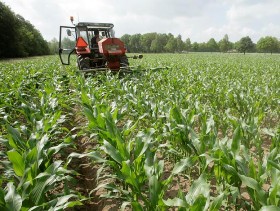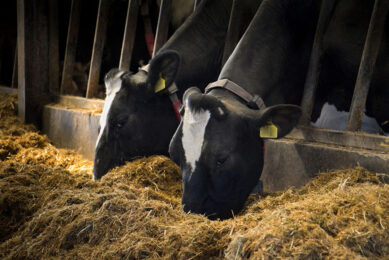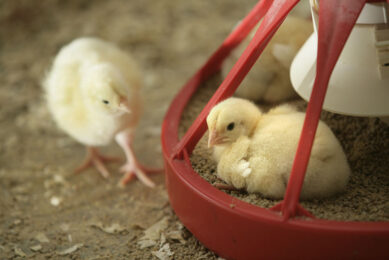Role of plant cell walls in dairy cow nutrition

With a large international participation the symposium of the Dutch Centre for Animal Nutrition in cooperation with Lallemand on the role of plant cell walls in cow nutrition was well attended.
The Centre for Animal Nutrition in the Netherlands in cooperation with Lallemand Animal Nutrition during a two-day symposium informed more than 240 delegates (of which 75% came from outside the Netherlands) on the importance of plant cell wall characteristics in nutrition management of dairy cattle.
CAN is a Dutch alliance in research and education joining their expertise and composed of the cluster ‘Animal Nutrition’ of Wageningen UR Livestock Research in Lelystad, the chair group ‘Animal Nutrition Group’ of Wageningen University and the department ‘Nutrition’ of the Veterinary Faculty of the University of Utrecht.
The symposium, held on 22 and 23 March, dealt with the digestion of plant cell walls by ruminants.
John Cone and André Bannink (Wageningen University, NL), Michael Allen (Michigan University, USA), Charles Sniffen (Fencrest LLC, USA) and Ana Lourenço (University of Tràs-os-Montes, Portugal) contributed to the program with in depth presentations.
Indigestible plant cell walls
A large portion of solar energy reaching our planet is fixed in plant cell walls. Due to its chemical properties, these cell walls are indigestible for humans and animals and therefore not suitable as an energy-yielding food source.
As such, a major part of the solar energy cannot be used to feed the growing global human population. By symbiosis with specific micro-organisms, various animal species are capable of utilising the energy and nutrients embodied in plant cell walls.
For ruminant species, plant cell walls are an important feed component, not only as an energy and nutrient source, but also as a regulatory factor for feed intake and in the maintenance of rumen health.
Improving digestion
Improving the digestion of plant cell walls will result in a more efficient conversion of low-quality plants into high-quality animal products. “Understanding the development of cell walls as plants mature and the factors affecting it, is important to farmers in the decision making for grazing and crop harvesting and adequate diet formulation”, says Ad van Vuuren of Wageningen UR and chairing the conference.
“Rumen turnover is a major controller of dry matter intake and hence animal production. Rumen turnover rate is the sum of passage rate and degradation rate in the rumen.
“These parameters are not only influenced by intrinsic plant characteristics, but also by extrinsic factors within the rumen environment, such as rumen pH, rumination, absorption and stimulation of the microbial population.”
Another aspect of cell wall degradation in the rumen is the production of methane. “Methane represents not only a loss of digestible energy, but also contributes to the emissions of greenhouse gasses by the livestock sector”, Van Vuuren adds.
Farm visit
On the second day the delegates visited Wageningen University’s experimental farm “De Marke”.
This farm houses 81 dairy cows with young stock. The cows produce on average 7,850 kg/yr.
With 55 ha of land production intensity is 11,200 kg milk/ha. The cows are grazed 4 hours per day from May until October. The cows are fed 1,820 kg concentrates per cow per year.
The objectives of De Marke are to achieve a 0 kg/ha of phosphate surplus and ammonia emission of less than 30 kg/ha.











